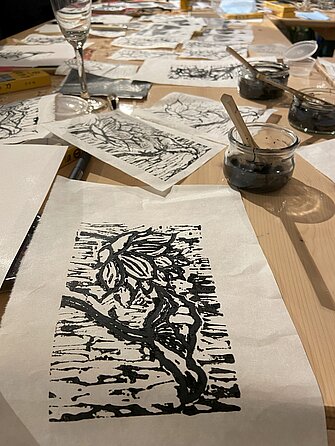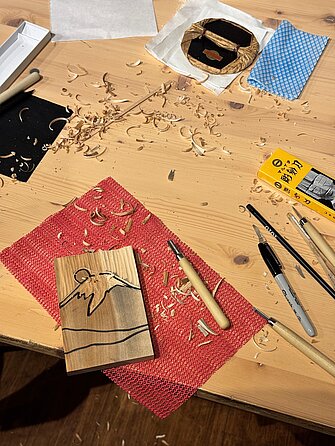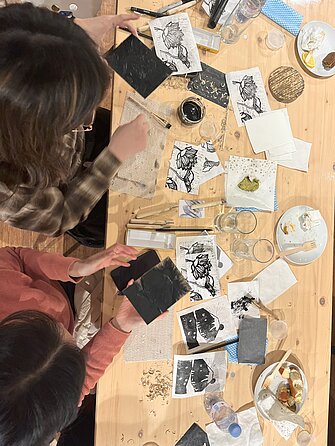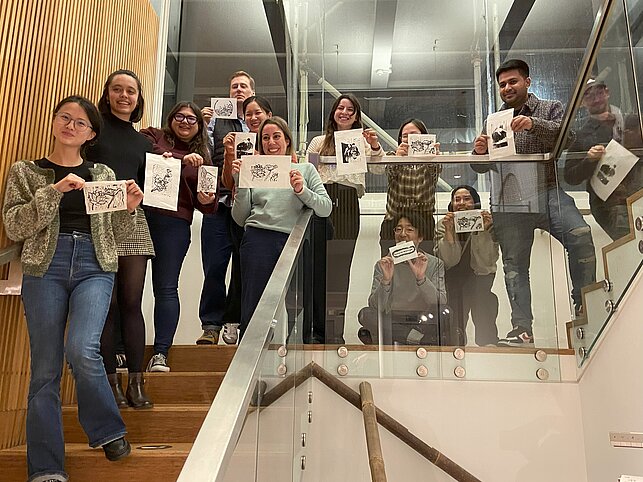Once more we bought together the concept of Omotenashi and Kiyomeru, the arts of hospitality and purification respectfully to create a deeper understanding of Japanese culture.
Culture & Lifestyle
|23/04/2025

The London showroom is a space to to see all the latest TOTO bathroom products and explore our world of wellbeing. It also has a gallery space which acts as a hub for creativity where the UK team can introduce elements of Japanese culture. Recently, the team led by General Manager, Kazuki Osugi, has explored some interesting and uniquely Japanese crafts. These craft sessions are a firm favourite amongst our invited guests of architects and interior designers and most recently TOTO hosted an evening of Japanese wood craft which proved to be particularly popular. Our teacher for the evening was the talented Kuniko Maeda.
In Japan young children are taught how to carve soft wood, like Hinoki/Japanese Cypress, using special paper and ink to create stunning visual images and patterns. At TOTO in London our guests, who were all professional architects and designers, were using these ancient skills for the first time to create similar designs using a range of tools. We saw firsthand how this practice encourages using alternative skills and deep concentration.

Japanese woodcarving, or mokucho, is an art form that has been integral to Japan's cultural and spiritual identity for centuries. This craft encompasses a wide range of creations, from intricate temple ornaments to everyday household items, each piece reflecting the artisan's dedication to precision, aesthetics, and the inherent beauty of the wood. The roots of Japanese wood carving trace back to ancient times, with artisans developing techniques that have been meticulously preserved and passed down through generations.
Historically, wood was the primary material for constructing temples, shrines, and traditional homes, leading to a profound understanding and appreciation of its properties. Master carpenters, known as miyadaiku, were revered for their ability to create structures without the use of nails, relying instead on complex joinery techniques that showcased both functional ingenuity and artistic expression. Engaging in wood carving offers numerous benefits beyond the creation of aesthetically pleasing objects. The process fosters a deep connection between the artisan and nature, promoting mindfulness and a sense of tranquility.

The tactile experience of working with wood can be therapeutic too, reducing stress and enhancing emotional wellbeing. This craft encourages patience, attention to detail, and the development of fine motor skills. In modern times, there has been a resurgence of interest in traditional crafts, including wood carving, as people seek sustainable and meaningful practices and an antidote to the digital world.
This revival not only preserves cultural heritage but also provides artisans with opportunities to innovate and adapt ancient techniques to modern contexts. Japanese wood carving is more than a mere craft; it is a harmonious blend of art, spirituality, and tradition. Its enduring legacy continues to inspire and captivate, offering profound insights into the Japanese way of life and their intrinsic connection to nature.
Once more we bought together the concept of Omotenashi and Kiyomeru, the arts of hospitality and purification respectfully to create a deeper understanding of Japanese culture.

What do you think?
( 0 comments )
We look forward to hearing from you!